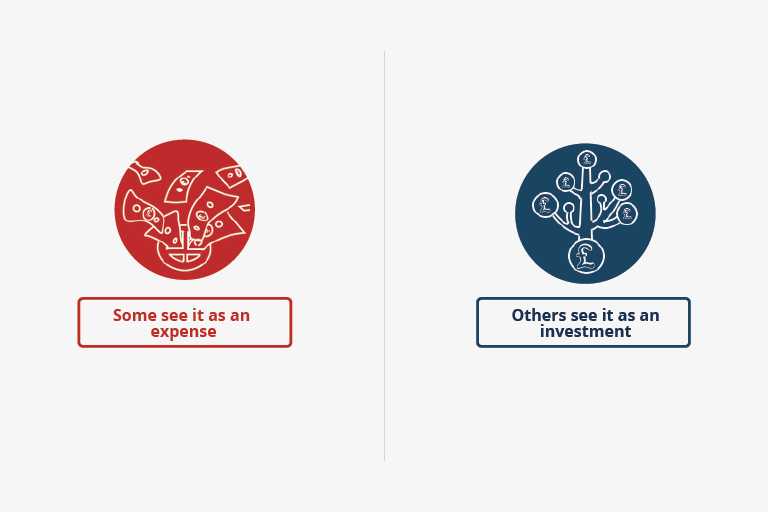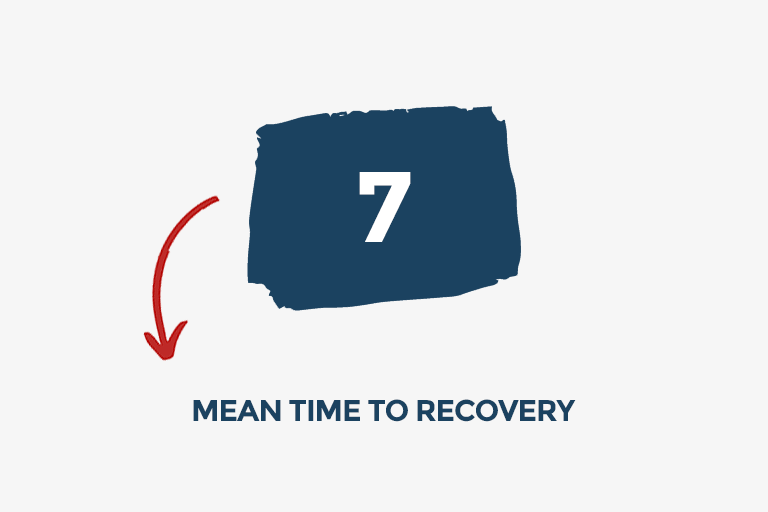Make your IT Spend an investment, not an expense.
Two Different Ways that Owners and Managers Buy IT and Technology.

The second group benefit more!
All businesses have moments where every last penny counts. BUT… when all spending decisions are made by asking…
“what’s the cheapest way to do this?”
That’s when problems develop.
Our existing clients fit into the second category because they want the best and we only want to give the best.
This second group recognises that IT is their infrastructure; the backbone to their business. Taking risks on cheaper methods can be damaging for businesses.
No matter what kind of business you run, technology sits at the heart of it. It’s going to become more and more important in the future.
Big thinkers see IT as a long-term investment. They understand the correlation between the short-term impact to cash flow, and the enormous long-term benefits of business growth, increased productivity and highly satisfied staff and customers.
If you’re nodding your head and identify with what we’ve just written, we really should talk – our businesses sound like a good fit.
Here’s something else to think about.
Just because our clients are big thinkers and are willing to invest doesn’t mean we don’t focus very, very hard on giving them an excellent ROI – Return On Investment.
It’s a key driver for us when doing our technology planning and regular strategic reviews with clients.
As the saying goes, “you can’t manage what you can’t measure”. So here are 7 technology KPIs – Key Performance Indicators – that you could use to ensure you’re getting your return.
Disclaimer: We don’t necessarily use all of these KPIs with every client. We work with each client individually to understand what kind of reporting is most important to them. And then deliver that. There’s no point doing reporting unless it’s actually being used to make good strategic decisions.

1. Budgeted IT spend vs actual spend
It’s completely possible to forecast the costs of technology, and significantly reduce the likelihood of “urgent, emergency spend”.
You have to do this over the long-term. Accurate forecasts come from investing in quality infrastructure that’s designed to accelerate growth.
This is why you need a technology partner who’s deeply involved with your business and its long-term planning. If someone doesn’t understand where you’re going and why, how can they accurately advise on your technology?

2. % of infrastructure projects delivered on time, to budget and spec
This is an easy KPI to both understand and measure.
By tracking this, you encourage your IT partner to make realistic estimates about the length and cost of projects. Experienced IT professionals will not find it difficult to build in extra time and cost to account for foreseeable problems.

3. Average time to solve a problem
It’s a common question most IT support companies receive while talking to prospective new clients: How long will it take to solve problems?
The answer is “it depends”. Specifically, it depends on the problem and the impact of it.
All IT companies run a form of triage for problems that come in, just as A&E doctors do in hospitals.
You wouldn’t expect a broken arm to get the same level of urgency and attention as a heart attack.
It’s the same with technology issues.
What’s important is your IT partner understanding which of your systems are critical to normal operations, and what’s just “annoying” when it doesn’t work properly for a short while.
These kind of boundaries should be established during a thorough on-boarding with your new IT partner.

4. Uptime vs planned/ unexpected downtime
Downtime is when systems and devices are not available for your team to do their usual work.
There are two types of downtime – planned and unexpected.
A great IT partner will work alongside you to make sure that planned downtime for maintenance has as little an impact as possible on your staff and overall productivity.
Of course, it’s impossible to eliminate all unexpected downtime. Some of it is unavoidable, such as a loss of internet access in the wider area, not just your office.
Uptime is all the rest of the time when your systems are working fine.

5. Recovery Point Objective and Recovery Time Objective
Whoa! We just hit you with some technical terms. Here’s what they mean.
They both relate to the backing up of your data.
Recovery Point Objective (RPO) is used to determine how often your data needs to be backed up. This will be dictated by how often it changes and how critical the data is.
For example, if you were a bank, you’d want an RPO of 0 minutes. If a bank’s system crashes, they need to be able to recover every single transaction that happened right up to the point of the crash.
But let’s say you ran an architects’ office. Your staff might only save a few files a day. So an RPO of 2 hours might be acceptable. It means in the event of a big crash, the worst amount of data that can be lost is 2 hours’ worth.
Setting an RPO is always a trade-off between cost and convenience. There are always clever solutions a good IT partner can create for you – for example backing everything up in real time within your office, then only sending it to a secure data centre away from your office twice a day.
Recovery Time Objective (RTO) is the length of downtime your business can tolerate until data recovery. In other terms, it’s how long you realistically have to restore full operations.
Again, your critical systems will have a lower RTO than other systems. This is an important conversation to have with your IT partner.

6. Mean Time Between Failures
Mean Time Between Failures (MTBF) is the average time between system breakdowns.
Knowing this can help you measure the performance and reliability of your infrastructure.
Tracking it can give you a real life view of how robust your systems are. Your staff may perceive there are “always problems”, but measuring the MTBF might show your systems are running as expected.
This also works the other way round, when you can discover you’re suffering more failures than would be expected.
This can help you build a business case for making an investment in new software, hardware or systems.
7. Mean Time To Recovery
The final KPI, Mean Time To Recovery (MTTR) measures the average time it takes your business to recover from a failure: From discovery to fix.
Simply put, the average time it takes your business to get back up and running again.
This can also be a useful measure of how robust your business’s infrastructure is, and help you decide where to invest long-term.

Of course, there are other KPIs that you could measure to look even more deeply into your systems. But these are the ones we’d strongly recommend starting with.
Not only will they give you a great insight into how well your current infrastructure is working for you, but they will also tell you a lot about how well your IT provider is performing.
Would you like help establishing the right technology KPIs for your business and measuring them?
We can help. Let’s talk.

